I did a test with randomly chosen 12 NPN BJTs. I applied a clock pulse to each of them and observed their collector voltages. Some of them showed very low rise time, while some responded terribly slow. As far as I realized, power transistors like 2N3055 yield very high rise times, while those which have very low collector current rating yield very low rise times.
I used to think that the "transition frequency" would give enough information about this. I chose a 100MHz transistor (BC817), but it couldn't survive even at 20kHz. Therefore, the "transition frequency" parameter shouldn't be giving enough information alone, or it should be about something totally different (I don't know).
My question is, how do I roughly predict step response characteristics of a BJT by looking at its datasheet? Which datasheet entries give information about this behavior?



